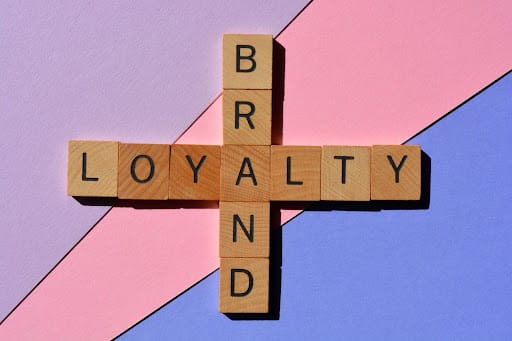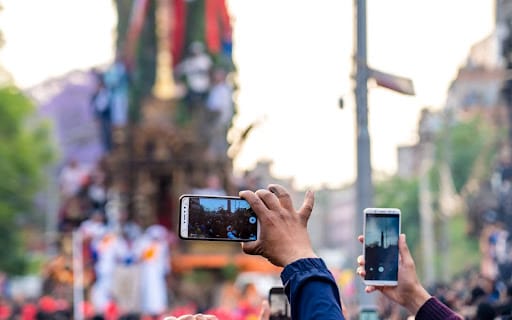What Can Mixed Reality Do To Shape The Future of Marketing
Marketing is a dynamic field that thrives on innovation. With technological advancements, the businesses are constantly seeking new ways to engage with their audiences. Mixed Reality (MR), blends the physical and digital worlds and emerges as a transformative tool in marketing. MR offers immersive and interactive experiences and aids brands to connect with their audiences in ways that were previously unimaginable.
This article explores how Mixed Reality is shaping the future of marketing, the strategies businesses can adopt to integrate Mixed Reality effectively, and how platforms like Flam are enabling marketers to stay ahead in a competitive landscape.
Future of Marketing with Mixed Reality

Mixed Reality (MR) is reformulating the marketing ecosystem by merging the physical and digital worlds to create immersive and interactive experiences that can captivate audiences exclusively. In contrast to traditional marketing methods, Mixed Reality transforms a passive viewer into an active participant. It allows brands to craft personalized and engaging stories that deeply resonate with their target audiences.
“With Mixed Reality, the whole interaction with messaging has become real and exciting”
~ Sukhpreet Singh, CMO – DishTV
Redefining Customer Engagement Through Mixed Reality
The success of any marketing campaign lies in its ability to capture and retain audience attention. Mixed Reality elevates customer engagement by creating environments that feel personal, interactive, and memorable.

Immersive Storytelling
Mixed Reality allows brands to craft narratives where customers become active participants rather than passive observers. Immersive environments engage multiple senses, making the experience more impactful.
Interactive Product Experiences
Through MR, customers can interact with products virtually, exploring features and benefits in an intuitive and engaging way. This is especially valuable for high-involvement purchases like automobiles or real estate.
Personalized Interactions
Mixed Reality platforms powered by AI can adapt content in real-time based on user preferences and behaviors, ensuring that every interaction feels relevant and personalized.
Traditional Marketing | Mixed Reality-Driven Marketing |
One-way communication | Interactive, two-way engagement |
Static visuals | Dynamic, immersive experiences |
Generic messaging | Personalized, adaptive interactions |
Transforming Brand Awareness and Loyalty
Building a strong brand presence requires strategies that leave a lasting impression on customers. Mixed Reality offers tools to help businesses achieve this more effectively.

Enhancing Brand Recall
Immersive experiences created by Mixed Reality are more likely to be remembered by audiences compared to traditional ads. By engaging users in unique ways, MR campaigns improve brand recall and visibility.
Creating Emotional Connections
Mixed Reality enables brands to connect with customers on an emotional level by offering experiences that resonate with their values, aspirations, and lifestyles.
Strengthening Loyalty Through Gamification
Gamified MR campaigns encourage repeat engagement, fostering a sense of loyalty and building a community around the brand.
Brand Objective | How MR Supports It |
Building Awareness | Unique, memorable experiences |
Emotional Resonance | Multisensory interactions |
Encouraging Loyalty | Gamification and community-building |
Streamlining Marketing Operations with Mixed Reality
Beyond customer-facing applications, Mixed Reality is also helping marketers optimize their internal processes.
Efficient Campaign Planning
MR can simulate marketing scenarios, allowing teams to test concepts and strategies in a virtual environment before dedploying them in the real world.
Enhanced Collaboration
Marketing teams across different locations can collaborate in shared virtual spaces, streamlining brainstorming sessions and decision-making processes.
Data-Driven Optimization
MR platforms provide real-time analytics on user behavior, allowing marketers to make data-driven adjustments to campaigns for improved outcomes.
Operational Benefit | MR Application |
Testing Campaign Ideas | Virtual simulations |
Team Collaboration | Shared virtual workspaces |
Performance Tracking | Real-time user analytics |
Navigating Challenges and Opportunities in Mixed Reality Marketing
Like any technology, Mixed Reality presents both challenges and opportunities. Addressing these effectively is crucial for maximizing its impact.
Overcoming Cost Barriers
MR campaigns can be resource-intensive, but scalable platforms like Flam offer cost-efficient solutions that make MR marketing accessible to businesses of all sizes.
Addressing Accessibility

To ensure broader reach, marketers must focus on creating Mixed Reality experiences that are compatible with widely used devices like smartphones, eliminating the need for specialized hardware.
Measuring ROI Effectively
Traditional marketing metrics may not fully capture the success of Mixed Reality campaigns. Businesses should focus on engagement metrics like time spent in the experience, interaction rates, and customer feedback to evaluate effectiveness.
Challenge | Opportunity |
High Costs | Scalable platforms reduce complexity |
Limited Device Accessibility | Smartphone-compatible MR experiences |
Measuring Success | Engagement-focused metrics |
Flam’s Role in Advancing Mixed Reality Marketing
Flam has positioned itself as a key player in the Mixed Reality space, offering tools that empower marketers to create impactful campaigns.
How Flam Supports Mixed Reality Marketing?
Flam’s web-based solutions ensure Mixed Reality campaigns are accessible across devices without requiring app downloads. It provides real-time insights into user engagement, helping marketers refine their strategies. It also delivers tailored MR experiences to diverse audiences.
Brands can choose their Flam MR experience either through
Flam Card, which transforms a static ad to MR motion experience.
Flam Alpha, bringing ads alive and creating immersive experiences.
Flam Interactive, engages audiences with touch-based interactive experience.
Flam Multi-Interactive, audience can choose their path of MR experience.
Final Thoughts
Mixed Reality is poised to revolutionize the marketing industry, offering innovative ways to engage audiences, build brand loyalty, and streamline operations. As businesses adapt to this new era of immersive marketing, they must embrace the opportunities while addressing the challenges to stay ahead of the competition.
Platforms like Flam are leading the charge by providing scalable, accessible, and analytics-driven solutions that simplify Mixed Reality adoption. By leveraging MR effectively, brands can create memorable experiences that not only captivate audiences but also drive long-term growth and success.
Comments
Your comment has been submitted successfully!